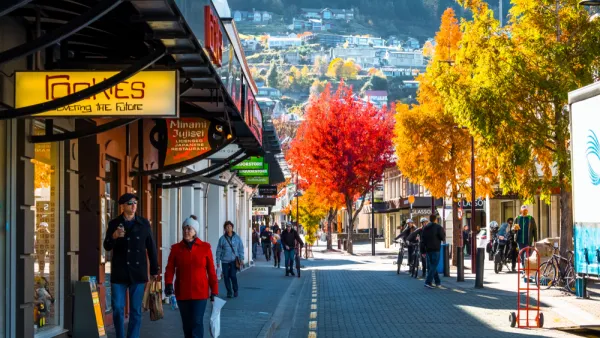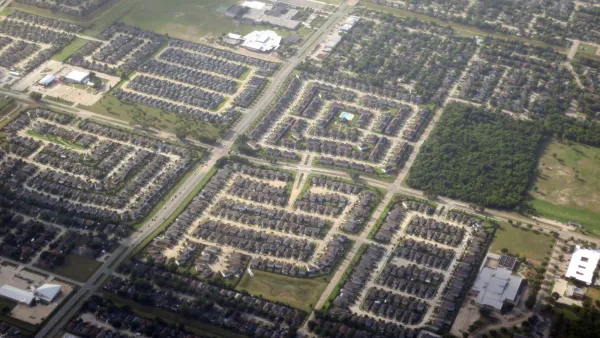Density -- either high or low or somewhere in the middle -- is a key defining element of our cities. In this essay, Witold Rybczynski looks at the relative densities of U.S. cities and suggests that things may start to change subtly.
"There are a number of ways in which American cities could become denser. In vertical downtowns, tall buildings could simply get taller, or older office towers could be converted to residential use, as has happened in some business districts. The most common form of urban densification is the conversion of disused waterfronts, decommissioned Navy yards, and obsolete industrial areas into housing and office developments, an attractive strategy since it does not displace existing residents. In older city neighborhoods, taller structures could progressively replace three- or four-story row houses and low apartment buildings, though community resistance makes this a slow process.
Suburban densification is more challenging. In Philadelphia, where I live, it was common practice in the mid-20th century to subdivide large suburban estates into communities of single-family houses, but such open spaces in the suburbs are increasingly rare. Neighborhoods of single-family housing can be made denser by building clusters of smaller houses on what were previously large single-house lots, or by introducing row houses or low-rise apartment buildings. Both strategies involve radical changes to neighborhood identity, however. Perhaps the greatest challenge will be to increase density in the large planned-unit communities that have proliferated in the past few decades. In these, any change is constrained by homeowner associations in which even a small minority of members can effectively block alterations they find objectionable."
In this discussion of density and cities, Rybczynski wonders if spread-out urbanity will continue, if urban density will take hold, or if it will be a combination of the two.
FULL STORY: Dense, Denser, Densest

Analysis: Cybertruck Fatality Rate Far Exceeds That of Ford Pinto
The Tesla Cybertruck was recalled seven times last year.

National Parks Layoffs Will Cause Communities to Lose Billions
Thousands of essential park workers were laid off this week, just before the busy spring break season.

Retro-silient?: America’s First “Eco-burb,” The Woodlands Turns 50
A master-planned community north of Houston offers lessons on green infrastructure and resilient design, but falls short of its founder’s lofty affordability and walkability goals.

Test News Post 1
This is a summary

Analysis: Cybertruck Fatality Rate Far Exceeds That of Ford Pinto
The Tesla Cybertruck was recalled seven times last year.

Test News Headline 46
Test for the image on the front page.
Urban Design for Planners 1: Software Tools
This six-course series explores essential urban design concepts using open source software and equips planners with the tools they need to participate fully in the urban design process.
Planning for Universal Design
Learn the tools for implementing Universal Design in planning regulations.
EMC Planning Group, Inc.
Planetizen
Planetizen
Mpact (formerly Rail~Volution)
Great Falls Development Authority, Inc.
HUDs Office of Policy Development and Research
NYU Wagner Graduate School of Public Service




























